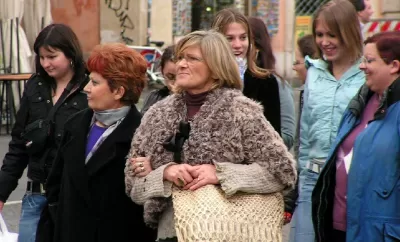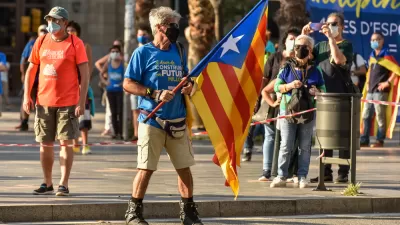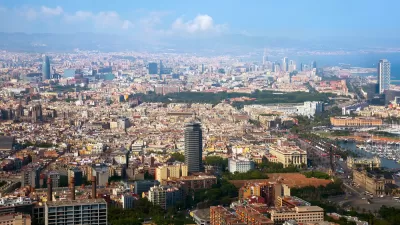Cities are built by men, and so too often urban design does not reflect the needs, perspectives, and realities of women.

"Cities are supposed to be built for all of us, but they aren't built by all of us," says Stephanie Hegarty in a BBC video report. She talks to members of Col·lectiu Punt 6, a feminist collective of urban designers in Barcelona, about how cities can better serve women and the innovative projects happening in the city.
For example, women use public restrooms more often and for longer periods of time than men, and they often need to bring in strollers. And men can stand while women need stalls, meaning that women’s restroom spaces should be larger. Hegarty also looks at how public spaces, like playgrounds, are segregated and ways design can better integrate these places.
Punt 6 and Janet Sanz, Barcelona’s Deputy Mayor for Urbanism, also advocate for more accessible transportation spaces and less car-centric urban design. Barcelona has developed a series of innovative superblocks, areas where nine smaller blocks are combined to create a larger network of streets that support biking, pedestrians, and public spaces and where car use is limited. Women in Barcelona have also expressed an overwhelming desire for more benches, and the city has installed hundreds of them in neighborhoods, along with trees and more greenspace.
Barcelona is also known as a party town where women do not always feel comfortable and safe. "Now the city is saying no to sleaze with these anti-machismo stands," notes Hegarty. Women can go to the stands to get more information about resources and a new app that the city has put out to report incidents of sexual harassment or violence.
"Seeing what a city built by women would look like is still just a fantasy. But these women are giving a glimpse of what that future could be," concludes Hegarty.
FULL STORY: What would a city designed by women be like?

Planetizen Federal Action Tracker
A weekly monitor of how Trump’s orders and actions are impacting planners and planning in America.

Chicago’s Ghost Rails
Just beneath the surface of the modern city lie the remnants of its expansive early 20th-century streetcar system.

San Antonio and Austin are Fusing Into one Massive Megaregion
The region spanning the two central Texas cities is growing fast, posing challenges for local infrastructure and water supplies.

Since Zion's Shuttles Went Electric “The Smog is Gone”
Visitors to Zion National Park can enjoy the canyon via the nation’s first fully electric park shuttle system.

Trump Distributing DOT Safety Funds at 1/10 Rate of Biden
Funds for Safe Streets and other transportation safety and equity programs are being held up by administrative reviews and conflicts with the Trump administration’s priorities.

German Cities Subsidize Taxis for Women Amid Wave of Violence
Free or low-cost taxi rides can help women navigate cities more safely, but critics say the programs don't address the root causes of violence against women.
Urban Design for Planners 1: Software Tools
This six-course series explores essential urban design concepts using open source software and equips planners with the tools they need to participate fully in the urban design process.
Planning for Universal Design
Learn the tools for implementing Universal Design in planning regulations.
planning NEXT
Appalachian Highlands Housing Partners
Mpact (founded as Rail~Volution)
City of Camden Redevelopment Agency
City of Astoria
City of Portland
City of Laramie





























